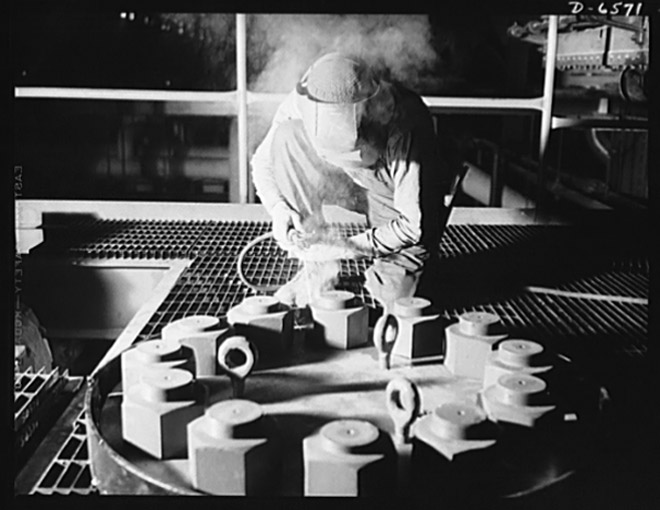
1874: Carl Bosch, a chemist whose work would transform agriculture and industry — and eventually enable the Green Revolution — is born.
Bosch’s contribution to humanity was the development of the Haber-Bosch process, a technique for creating ammonia in large quantities.
Ammonia is an essential component of agricultural fertilizers, because it’s rich in nitrogen — which makes plants grow bigger. Bosch’s work led directly to a massive increase in agricultural productivity in the 20th century, and at least one professor has estimated that 40 percent of the world’s food (.pdf) can now be traced back to the process.
Coupled with the development of plant varieties better able to absorb nitrogen, (spearheaded by Norman Borlaug in the 1960s) the Haber-Bosch process helped save many people from starvation. It also no doubt helped facilitate the population explosion of the past century.
And it won Bosch the Nobel Prize in chemistry in 1931.
Bosch worked for chemical manufacturer Badische Anilin- und Sodafabrik, the Baden Aniline and Sodium Factory or BASF, in Ludwigshafen, Germany. The company in 1908 acquired the rights to a process for synthesizing ammonia under high pressures that had been developed by Fritz Haber.
Haber’s process used osmium and uranium as catalysts, which were impractically expensive (not to mention radioactive, though that probably wasn’t a concern at the time). Bosch set to work on devising a more practical version of the process suitable for large-scale industrial production. He also developed safer high-pressure blast furnaces to contain the reaction.
The resulting process, known today as the Haber-Bosch process, involves cooking air and natural gas over an iron oxide catalyst and intense pressure and heat. Thanks to the widespread availability of cheap natural gas, the process is inexpensive and effective.
It transformed agriculture, which prior to the 20th century relied primarily on manure, not artificial fertilizers, to increase crop yields.
Now the world produces about 87 million tons of nitrogen-based fertilizers annually. This increase is primarily due to the Haber-Bosch process.
But the process is encountering major problems in the increasingly resource-constrained world.
That’s because the main reaction in the process is cooking N2 (the dinitrogen molecule, composed of two nitrogen atoms) and H2 (the dihydrogen molecule, composed of two hydrogen atoms) together at 500 degrees Celsius and 200 atmospheres of pressure. You need all that heat and pressure, because breaking apart an N2 molecule turns out to be incredibly difficult, due to the arrangement of electrons in the nitrogen atom’s outer shell.
The energy required to break the bond is 946 kilojoules of energy per mole of nitrogen, or twice the energy required to bust O2 (dioxygen) molecules.
Luckily, or so we thought, fossil fuels were cheap, widely available and incredibly energy-dense: A cubic foot of natural gas contains a bit more than a gigajoule of energy.
That’s enough energy to convert about 30 kilograms (66 pounds) of nitrogen into 36 kilograms (79 pounds) of ammonia.
So, once the Haber-Bosch process established it could be done, chemists across the world began to burn a lot of natural gas to get dinitrogen to react with hydrogen. And where do we get the hydrogen? Why, we use the natural gas for that too, naturally: It’s CH4 (methane) after all.
Taken together, there’s a lot of natural gas going into the production of nitrogen fertilizer.
And that’s why today, many people are starting to think that someone needs to invent a better way of making nitrogen fertilizer, one that doesn’t require so much fossil-fuel consumption.
Whoever comes up with a low-energy alternative to the Haber-Bosch process might even win a Nobel Prize.
Source: Various. Adapted in part from a Wired Science post by Alexis Madrigal, “How to Make Fertilizer Appear Out of Thin Air.”
Image: A worker makes a weld in the ammonia-synthesis system at a Tennessee Valley Authority plant near Muscle Shoals, Alabama, in June 1942.
Alfred T. Palmer/TVA/U.S. Office of War Information
Originally published on Wired.com, August 27, 2010
